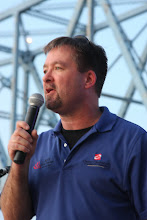It's shaping up to be a Frankfort Christmas week that only a Grinch could enjoy. Legislators will return to Frankfort on January 5th for a General Assembly that will likely give a whole new meaning to long session. Crafting a new two-year budget always dwarfs nearly every other topic in the even-numbered years. Throw the prospect of tax increases vs. painful education cuts into the equation and it becomes rare theatre; it's the type of situation that is surely to give lawmakers and their thirst for re-election nightmares.

Kentucky is nearing a situation where a few "insignificant" taxes increases are not nearly enough. Indeed, the one "low hanging fruit" I hear most often mentioned now is to possibly raise the state's current 6% sales tax to 7% or more. Each 1% increase raises approximately $500 million. It's considered low hanging fruit because Indiana's sales tax is 7% and Tennessee's is more than 9%.
The last time lawmakers raised the state sales tax was in 1990 when a court ruling led to the KERA education reforms and the need to raise significant revenues for more equitable school funding statewide. Speaker Stumbo went on to tell the media last week that very few legislators were defeated in their re-election bids after the 1990 sales tax increase. What he didn't mention was that most legislators also funded many capital projects back in their home district during the 1990 session to "ease the pain" of that sales tax increase in voters' minds. It apparently worked.
In 2010, however, there might not be enough revenues for schools' operating budgets and projects. It's going to be a long session.


